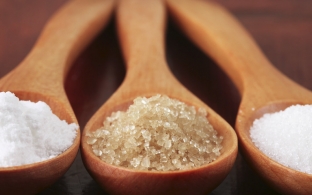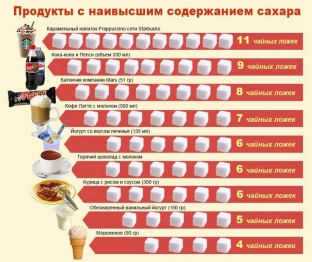Glycation end products, i.e. non-enzymatic glycolysis are represented by a complex group of compounds formed as a result of a reaction involving sugar and amino acids. Such a process is observed, for example, when frying meat, but also occurs in the human body. Oxidation and glycation – two main molecular mechanisms that play a decisive role in the development of diseases and aging of the body. About the essence of the process of glycation, the changes it causes in the body and methods to minimize the negative impact of this phenomenon, estet-portal.com will tell in this article.
What is the harm in advanced glycation end products?
Fructose – one of the strongest pro-inflammatory substances leading to the formation of end products of glycation and accelerating the aging process of the body. Moreover, it is fructose that provokes the accumulation of fat around the internal organs, as well as:
- increases insulin and leptin levels;
- reduces sensitivity to the above hormones;
- promotes premature aging;
- increases the risk of developing heart disease.
Also, glycation end products contribute to the development of aging-related chronic degenerative diseases, including:
- diseases of the cardiovascular system;
- Alzheimer's disease;
- diabetes.
Below estet-portal.com will tell you more about:
- fructose metabolism;
- Effects of glycation end products on the skin4
- Ways to minimize the impact of glycation.
What do you need to know about fructose metabolism in the body?
It is important to understand that fructose metabolism and glucose metabolism in the body proceed differently. Fructose, when compared to glucose, does more harm to the body because:
- Glucose is used by almost all cells of the body, so after consumption, it almost immediately goes to the needs of the body. Fructose is converted into free fatty acids, triglycerides (stored as fat) and very low density lipoproteins (bad cholesterol).
For comparison: 120 g kcal of glucose converts into fat less than 1 kcal, from 120 kcal of fructose – 40 kcal.
- Fatty acids, which are products of glucose metabolism, as they accumulate in the liver and muscles as fat, lead to insulin resistance and fatty liver (non-alcoholic). Insulin resistance results in metabolic syndrome and type 2 diabetes.
- Glucose inhibits ghrelin (the hunger hormone) and stimulates leptin (the satiety hormone). Fructose only interferes with the brain's response to the satiety hormone and does not affect the hunger hormone at all. The result of this is overeating.
- The metabolism of fructose leads to the formation of a large number of toxic substances, including uric acid.

How do glycation end products affect the skin?
Collagen and elastin, which are so important for the elasticity and youthfulness of the skin, "stick together" during glycation; by reaction with sugar. Violation of the structure of proteins entails a violation of their function, which is fraught with more pronounced wrinkles and flabbiness of the skin.
Skin laxity, age spots and wrinkles – consequences of exposure to glycation.
Appearance of age spots – Another unpleasant consequence of glycation, which leads to hyperactivity of melanocytes that produce the pigment melanin.
Violation of the structure and function of collagen, elastin and fibronectin significantly worsens the skin condition, which becomes more vulnerable to solar radiation and loses its elasticity. Glycation end products also inhibit fibroblast proliferation and adversely affect keranocytes.
How can the glycation process be stopped or minimized?
Complete neutralization of glycation is impossible, since this process is natural for the human body. However, the ingestion of sugar into the body must be minimized through proper nutrition. So, any semi-finished products, ready-made sauces, sweet soda, juices, sweets contain a lot of sugar.

Fruits also contain sugar, however, firstly, in much smaller quantities, and secondly, due to the fiber content, the digestion of fruits is slow. In addition, fresh fruits contain a number of substances beneficial for the body, which also help maintain youthful skin.






Add a comment